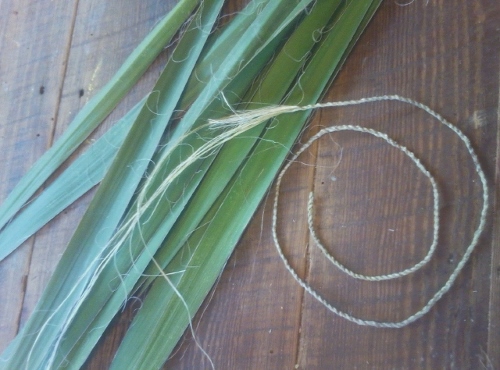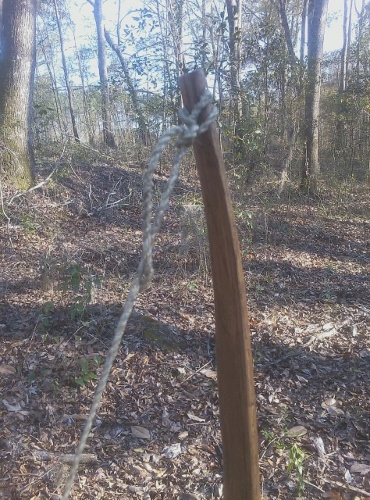Home › Forums › Bows and Equipment › Twisted one up
-
AuthorPosts
-
-
Finished this yucca bowstring…….So far so good!


-
Way cool! Whether plant fiber or sinew, the fibers are too short and many must be twisted together to make a bow-length string. I’ve long wondered how “they” (that is, “we” way back when) did that–got all those short pieces of fiber twisted together in a way that won’t pull apart under the tremendous stress of drawing and releasing the bow. Any light you could shed on this, tail, would be appreciated.
-
I think a build along or some pics of the process would really be interesting. I want to know how to make a string from a plant. That is a necessary survival skill…
-
Well, I’m a beginner but I’m learning. Like you say, the fibers are too short and must be continually spliced together throughout the length of the string.
First off, when you being twisting the fibers into reverse twist cordage, you start with one tag end longer than the other so they don’t need splicing at the same time (a no-no….much like laying short hardwood floor pieces next to each other). As you get within a few inches of the tag end, you gather another bundle of fibers and prepare to splice them in. You can either overlap the new bundle and the single tag end by a few inches and continue twisting, or form a “u” with the new fibers being twisted into both strands of the cordage….thus being stronger and less prone to pull out. On a bowstring, I think it’s best to use the “U” method.
None of this makes much (if any) sense in writing, but seeing it in person it’s pretty easy. I find the hardest thing to do is to keep a consistent string diameter while continually splicing in additional fibers.
-
Cameron, I’ll try to do some pics and a little build-along tomorrow. It is a neat process.
-
That is neat but I bet it is a lot of work. I recently saw a video on youtube of some S American natives making cordage. They were using a yucca type plant but the leaves were much longer. The woman pulled each leaf through some type of thresher to separate the fibers and remove the excess material. Then they soaked it and had a cord making party.
I’ve always wanted to try making a string from squirrel hides. I hear they make tough, long lasting strings. It takes 2 squirrel hides to make 1 string.
-
Cool, Duncan. I’ve read the same on squirrel hides, never tried it. Jim Hamm talks in one of his books about the Cherokee using deer and/or bear intestine as string material. Just twist it up, it’s tough and long enough not to need splicing. Might be worth trying out one day.
-
Wonder if you could leave the squirrel hair on as a natural string silencer?
-
Impressive, Tailfeather. A ‘build along’ series, if you have the time and energy, would be great!
-
Very cool! Id be very interested in that build video as well.
-
This IS very interesting!
So out of curiousity does anybody have any idea on what sort of lifetime a yucca bowstring might have?
Also how fat does such a string have to be in order to have the necessary strength to handle something like a 50# longbow?
-
-
AuthorPosts
- You must be logged in to reply to this topic.

